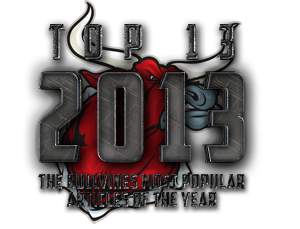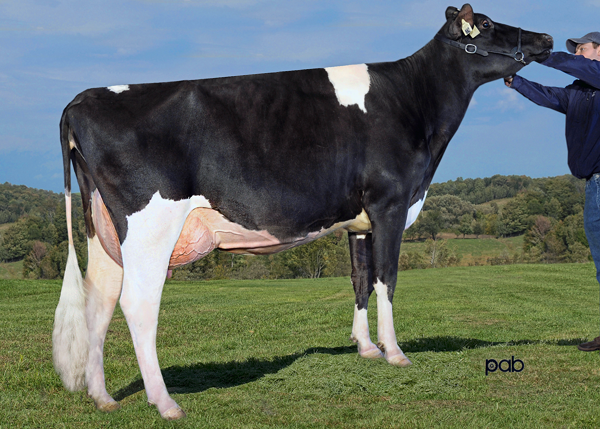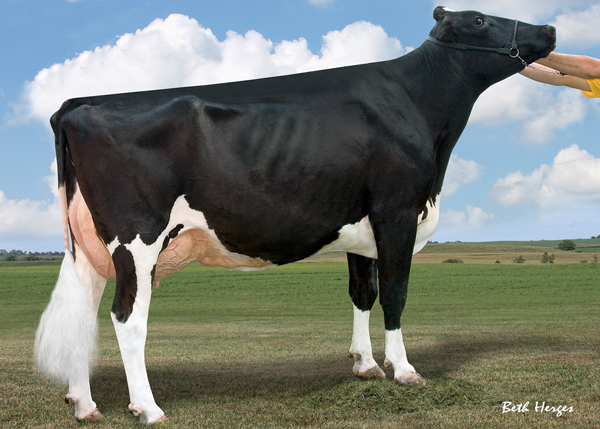
 Commercial milk producers want to breed cows that have high feed conversion efficiency, that avoid culling and that take the least care or staff time (Read more – Feed Efficiency: The Money Saver). The well known and widely used total merit indexes, TPI*TM and LPI, rank sires according to which ones leave the most profitable ideal or true type cow. However the factors in those indexes and the assumptions that are made when calculating them do not address feed, culling or low maintenance. Milk producers are left to fend for themselves when it comes to selecting sires that will leave their kind of cows.
Commercial milk producers want to breed cows that have high feed conversion efficiency, that avoid culling and that take the least care or staff time (Read more – Feed Efficiency: The Money Saver). The well known and widely used total merit indexes, TPI*TM and LPI, rank sires according to which ones leave the most profitable ideal or true type cow. However the factors in those indexes and the assumptions that are made when calculating them do not address feed, culling or low maintenance. Milk producers are left to fend for themselves when it comes to selecting sires that will leave their kind of cows.
What’s Being Heard
Milk Producers say: “All I want is a trouble free cow that efficiently converts forages to the kind of milk my milk buyer wants.”
Veterinarians say: “Cows must get in calf, have minimal feet problems and must not be prone to having production limiting diseases (reproduction problems, mastitis, metabolic disorders or ..etc.).”
Farm Workers say: “Sick animals, calving problems and animals that do not work easily within the farm system waste my time.”
Feed Advisers say: “Test your forages, feed the rumen, get the most out of your forages and the use of nutrients for both production and maintenance must be considered simultaneously (i.e. medium sized cows yielding the same as large cows are more feed efficient).”
Milk Processors say: ”Except for the milk we sell as a drink, we want the solids not the water.”
Financial Advisers say: “Make decisions based on profit per cow, per litre, per hectare, per pound of feed consumed, per worker, …etc.”
Consumers say: – Well in fact we may not be listening to consumers (Read more – Milk Marketing: How “Got Milk?” became “Got Lost”)
There are even more voices speaking in producers ears and more words appearing on the computer screens that producers read. With all the information that is currently available, selecting sires that best meet the needs of milk producers can be a daunting task.
Getting Started
Milk producers do not wish to deal all the numbers that appear on proof sheets. That can be a very time consuming exercise with no definitive answers at the end of it.
The Bullvine decided to research what is available today on selecting sires for feed conversion efficiency, for freedom from major known reasons for culling and for minimal extra care. We recognize that down the road there will be genomic indexes that are based on the relationship between yet to be recorded on-farm cow performance data and the DNA make-up of cows for these three areas. But today those genomic indexes do not exist.
Bullvine Efficiency Index (BEI)
Based on the information from a number of countries that we have been able to access, the Bullvine has developed the following formulas:
- BEI = Production (45%) + Durability (35%) + Health & Fertility (25%)
- Production = 30 Fat Yield + 50 Protein Yield + 10 Fat% + 10 Protein%
- Durability = 17 Herd Life + 42 Mammary System + 25 Feet & Legs – 8 Body Depth – 8 Stature
- Health & Fertility = 46 Somatic Cell + 23 Daughter Fertility + 23 Udder Depth + 8 Milking Speed
Notes:
- Milk Yield is not included as it contributes to more udder strain and added milk haulage or on-farm water removal costs.
- The negative weightings on Body Depth and Stature reflect that larger cows require extra feed to grow to that size and to maintain that larger size each and every day compared to cows of more moderate size.
Sire Rankings
Using CDN’s Custom Index Calculator the following sires came to the top of the list,
| CANADIAN | INTERNATIONAL | YOUNG SIRES |
|---|---|---|
| LONG-LANGS OMAN OMAN-ET | CO-OP BOSSIDE MASSEY-ET | FARNEAR-TBR-BH CASHMONEY-ET |
| CRACKHOLM FEVER | COYNE-FARMS DORCY-ET | SOUTHERN-HILLS BAYARD-ET |
| BRAEDALE GOLDWYN | DE-SU CIMARRON-ET | FARNEAR-TBR-BH CASHCOIN-ET |
| ALLYNDALE-I ATTICUS | BADGER-BLUFF FANNY FREDDIE | MR LOOKOUT P ENFORCER-ET |
| LIRR DREW DEMPSEY | CERVI ALLEMAR ET | CO-OP BOOKEM YUXI-ET |
| DE-SU GILLESPY-ET | DE-SU GULF-ET | CO-OP MASTER GENO-ET |
| GEN-I-BEQ BRAWLER | BERTAIOLA MINCIO ET | AMIGHETTI NUMERO UNO ET |
| GILLETTE JORDAN | GUARINI-ET | TEEMAR OBSERVER ADAM-ET |
| GEN-I-BEQ TOPSIDE | DE-SU FORK-ET | DE-SU DISTINCTION 11130-ET |
| ENSENADA TABOO PLANET-ET | DE-SU WATSON | DE-SU UNO 11446-ET |
Please note: Due to the fact that CDN’s Custom Index tool only allows quires by Domestic Canadian, MACE and Genomic individually it is not possible to do an overall ranking.
Key Findings
- Except for the Domestic Canadian list only a small difference exist between bulls
- The rankings do not always follow TPI* TM or LPI due mainly to the negative weighting on body depth and stature and increased emphasis on SCS, daughter fertility and udder depth.
- Although Braedale Goldwyn, Sandy Valley Bolton and Picton Shottle progeny are prominent on these listings, they are from different cow families so inbreeding using the sires on these lists should not be a problem, providing a breeder does not focus on just one of them
Highlights
- Braedale Goldwyn appears on the listings himself. As well he has six sons on the lists and is the maternal grandsire of three of the genomic bulls.
- Sandy Valley Bolton has seven sons on the listings
- Picton Shottle is the maternal grandsire of nine bulls on the listings
- Oman sons Long-Langs Oman Oman and Badger-Bluff Fanny Freddie both appear on the listings, as do one son and one maternal grandson of each of them
- De-Su Observer, yet to be daughter proven, has three sons and one maternal grandson on the genomics listing
The Bullvine Bottom Line
Commercial milk producers often want the decisions on which sires to use to be as simplified as possible. That is why the Bullvine has produced these BEI listings. With due consideration to avoid inbreeding, milk producers can expect BEI to rank bulls for them for production, durability and health & fertility with emphasis on the sires that can convert intake into milk production.
Get original “Bullvine” content sent straight to your email inbox for free.















